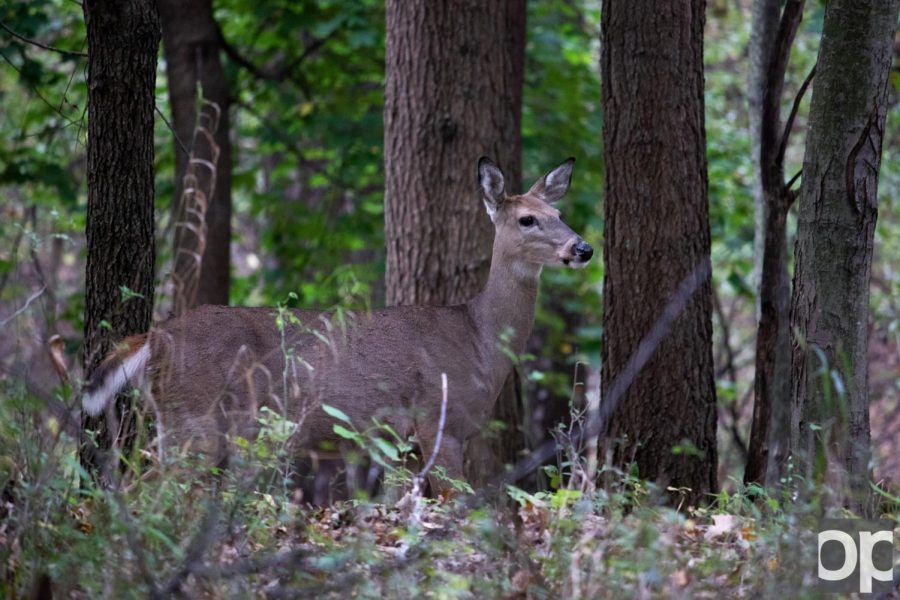Number of deer crashes in Rochester Hills goes down, but OU still affected
The city of Rochester Hills saw a decrease in deer-related car crashes in 2017, according to a new report from the city’s Deer Management Advisory Committee (DMAC).
According to the report, which was unveiled during the Sept. 24 city council meeting, there were 161 deer-related car crashes last year. This number is a slight decrease from 2016, when 174 deer-related incidents occurred.
“We are still seeing hot spots on Avon Road, Adams Road, Walton and Tienken,” said DMAC Chair Deborah Barno during the meeting.
Oakland University students commuting to campus are among the many drivers affected by the deer population in these areas. A report from Oakland University Communications and Marketing suggested, in 2017, 14 percent of the school’s student population consisted of on-campus residents, indicating that the other 86 percent of students were commuters.
“It’s everywhere,” said OU School of Education and Human Services graduate assistant Melissa Bishop of the deer-crossing signs she sees on her drive home to Attica.
During the aforementioned city council meeting, Barno suggested that October, November and December generally have higher deer crash rates. In an effort to lower these statistics, the DMAC plans to expand the usage of electronic signs cautioning drivers to be on the lookout for deer.
“We’re also continuing with the message, ‘High Deer Crash Area, Use Caution,’ instead of the ‘Don’t Veer for Deer,’ which had been used in past years,” Barno said during the meeting. “Signage is key — it’s just key in bringing attention to drivers to be cautious, especially if it’s a high deer crash area.”
While these signs may prove to be beneficial to off-campus drivers, once students are on campus, there are no reminders about OU’s deer population. While deer-related car crashes on OU’s campus are far less frequent than those occurring in the general Rochester Hills area, Oakland University Police Department (OUPD) officials have reminded students that they are not impossible.
“In 2018 so far, we have taken 17 animal complaint calls, and of those, six were because of injured deer,” OUPD Lieutenant Nicole Thompson said via email.
Between 2016, 2017 and 2018, only three deer-related accident reports have been filed with OUPD — one for each year. The sole incident in 2017 involved one of OUPD’s own patrol cars.
Statewide, however, there was nearly an 8 percent increase in deer collisions last year. According to the Michigan State Police, nearly 50,000 deer-related accidents occur each year. On average, these incidents are more likely to occur in the spring and fall, which prompted the DMAC’s efforts last month to increase awareness for deer safety. To accomplish this, the DMAC has been relying on utility bill notices, press releases and a brochure titled “Coexisting with White-Tailed Deer,” which Barno said they were particularly proud of.
Among the information included in the brochure is a reminder for Rochester Hills residents that the feeding and hunting of deer are both strictly prohibited.
“Deer complaints were slightly up in every category [this year],” Barno said during the city council meeting.
While most of the complaints among Rochester Hills residents pertained to roadkill, there were significant increases in complaints related to nuisance wildlife and feeding the local deer.
“[The deer] don’t abide by the law,” Bishop joked.
For more information on the DMAC and deer safety, visit the City of Rochester Hills website.




